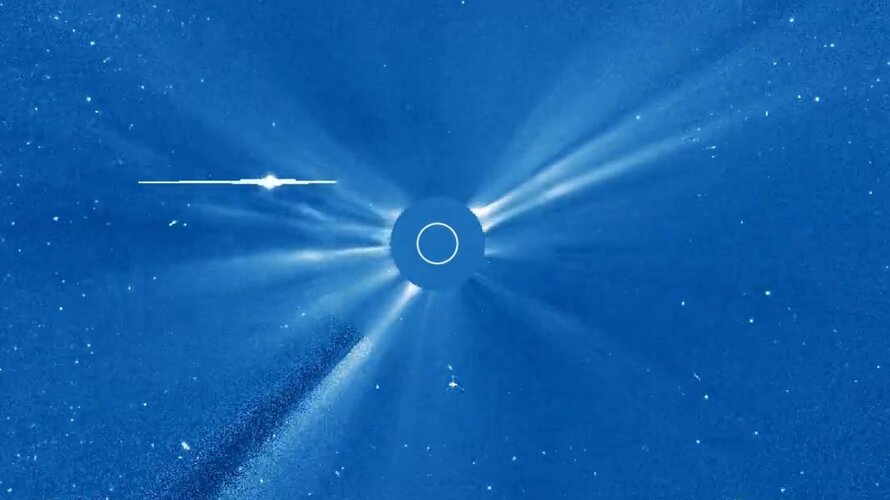
For 25 years, the ESA/NASA SOHO observatory has captured thousands of flares, coronal mass ejections, sunspots and coronal holes that continuously break out from the Sun. This video merges decades of footage from the C2 and C3 cameras of the LASCO instrument onboard the Solar and Heliospheric Observatory from 1998 to 2020, revealing the immense power of our star.
What becomes clear as the Sun turns and years pass and background stars whirl by, is how constant the stream of material is that is blasted in all directions – the solar wind. This constant wind is interrupted only by huge explosions that fling bows of material at vast speeds, filling the Solar System with ionized material and solar radiation.
Every now and then, the entire image is shrouded in white ‘noise’. These are the moments in which solar particles are flung at near-light speeds directly at the SOHO spacecraft, causing energetic solar protons to strike LASCO’s cameras and momentarily interfere with their observations.
This means that nearby satellites orbiting Earth will also have received a direct hit just fractions of a second later, potentially damaging their onboard electronics, solar cells and creating what appears as ‘snow storms’.
Fast Coronal Mass Ejections (CMEs) are often associated with these solar particle events. Often coming from the same region of the Sun, they eject billions of tonnes of solar matter in the hours and days that follow. If they hit Earth, they can trigger geomagnetic storms – temporary disturbances in our planet’s magnetosphere.
These events can cause serious problems for modern technological systems, disrupting or damaging satellites and the multitude of services – like navigation and telecommunications – that rely on them. Geomagnetic storms can also black out power grids and disturb radio communications. Solar particle events create a radiation hazard for astronauts in space, even serving potentially harmful doses of radiation to astronauts on future missions to the Moon or Mars.
As the Sun begins a new cycle, its 25th since we’ve had enough information to count them, solar activity will begin to ramp up. In fact, we have already seen the first new sunspots and solar flares of solar cycle 25 as captured here by ESA’s Proba 2 spacecraft.
ESA’s Space Weather Office, part of the Agency’s Space Safety programme, is working to protect infrastructure on Earth and in space from the unpredictable mood swings of our star with the Lagrange mission to monitor the Sun, a distributed system of space weather sensors to better understand Earth’s space environment as a result of space weather, and the Space Weather Service Network providing timely and accurate data on space weather.
Thank you to Brendan Gallagher from the US Naval Research Laboratory who processed footage from the two LASCO cameras to create this impressive video. The US Naval Research Lab is the leading research partner for the LASCO instrument onboard SOHO.
Click here for original story, Decades of the Sun, as seen by SOHO
Source: ESA Top Multimedia